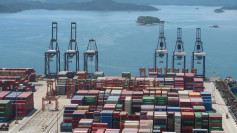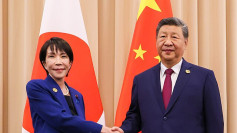China's consumer inflation rate slowed to a mere 0.3% year-on-year in October, according to data released by the National Bureau of Statistics (NBS). This marked a decline from September's 0.4% rise, reflecting weak consumer demand and adding to Beijing's economic challenges. The figure fell below the 0.4% increase anticipated by economists, underscoring the difficulties faced by the world's second-largest economy in its efforts to stabilize growth.
Meanwhile, the country's Producer Price Index (PPI) fell by 2.9% year-on-year in October, following a 2.8% decline in September. The drop illustrates ongoing deflationary pressures on factory-gate prices, reflecting weak industrial demand and a challenging global economic environment. The deepening deflation in producer prices is further evidence of China's struggle to revive its manufacturing sector.
Beijing's response to these economic headwinds includes a newly unveiled 10 trillion yuan ($1.4 trillion) package aimed at addressing local government "hidden debt" burdens, rather than direct cash injections into the economy. The move reflects the government's strategy to support local economies and reduce financial risks in the long term, while maintaining a cautious approach to stimulus.
China's economic challenges come amid a global economic environment where major Western economies continue to grapple with inflation, setting China apart with its issues of low or negative price growth. In 2023, China experienced a bout of deflation, highlighted by a significant drop in consumer prices earlier in the year. The property sector, which remains a critical pillar of China's economy, has been a major drag, with a crisis of confidence stalling investment and consumer spending.
The NBS data revealed that the decline in consumer inflation and the persistent slide in producer prices highlight the fragile state of domestic demand and industrial activity. Factory-gate prices have been falling since late 2022, illustrating prolonged challenges for Chinese manufacturers, who are grappling with subdued demand both at home and abroad.
Beijing has rolled out various measures since September to spur economic activity, including interest rate cuts and relaxed home-purchasing restrictions. However, analysts remain cautious, pointing out that the measures lack detailed implementation plans and have yet to produce the desired impact on economic growth.
Premier Li Qiang remains optimistic, stating this week that he is "fully confident" China will achieve its growth target of around 5% for 2024. However, the third-quarter data showed the slowest growth in a year and a half, raising doubts about the effectiveness of current policy measures. As China's economy grapples with structural issues, including a sluggish property market and weak consumer spending, the government faces mounting pressure to implement effective, detailed reforms.
The inflation slowdown contrasts with major Western economies, where rising prices have prompted aggressive interest rate hikes. While inflation remains a concern in other parts of the world, China's challenge lies in boosting domestic demand without triggering new financial risks. The government's cautious approach aims to balance immediate economic support with long-term stability, but analysts warn that more decisive actions may be necessary to ensure sustained growth.






